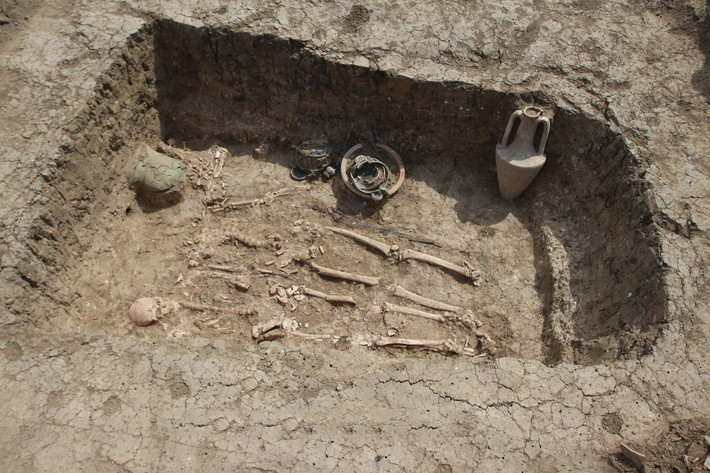Archaeologists Unearth Elite Warrior’s Burial Site in Croatia
Discovery of Well-Preserved Illyrian Helmet Sheds Light on Ancient Greek Military Culture

In a fascinating archaeological discovery, researchers from Zagreb University and Dubrovnik Museums have uncovered a rock-cut tomb containing the remains of an elite Greek warrior who lived over 2,400 years ago. The excavation, located on the Pelješac peninsula in southern Dalmatia, Croatia, has yielded a wealth of artifacts, including a remarkably well-preserved Illyrian helmet.
Ancient Greek Helmet: A Window into the Past

The Illyrian helmet, still boasting its classic open-faced design, dates back to a style first developed in the Peloponnese region of Greece during the 8th and 7th centuries BC. This type of helmet, initially used by ancient Greek Etruscans and Scythians, later became popular among the Illyrians, hence its name. The discovery of this helmet provides valuable insights into the military equipment used during the Greco-Persian Wars.
A Tomb Filled with Treasures
Alongside the warrior’s remains and helmet, archaeologists uncovered an impressive array of grave goods. These include:
- Fifteen bronze and silver fibulae
- Ten needles or pins
- Several spiral bronze ornaments and pincers
- Hundreds of glass paste and amber beads from a necklace
- Over thirty different vessels, primarily of Greek origin
Dr. Domagoj Perkić, a curator with Dubrovnik Museums, emphasized the significance of these findings, stating that the vessels were “the most expensive kinds of pots of the time,” likely sourced from prominent Attic and Italic workshops.
Insights into Ancient Burial Practices
The warrior was interred wearing the helmet, which was found where his skull would have been. The tomb, measuring over nine feet deep and six feet wide, suggests the deceased was a person of high status. Nearby, researchers also discovered the remains of a woman buried with a bronze bracelet, further highlighting the site’s importance.

This excavation not only provides valuable archaeological evidence but also offers a glimpse into the burial practices and social structure of ancient Greek society in the region. As research continues, this discovery promises to deepen our understanding of the cultural and military history of the Mediterranean world over two millennia ago.

